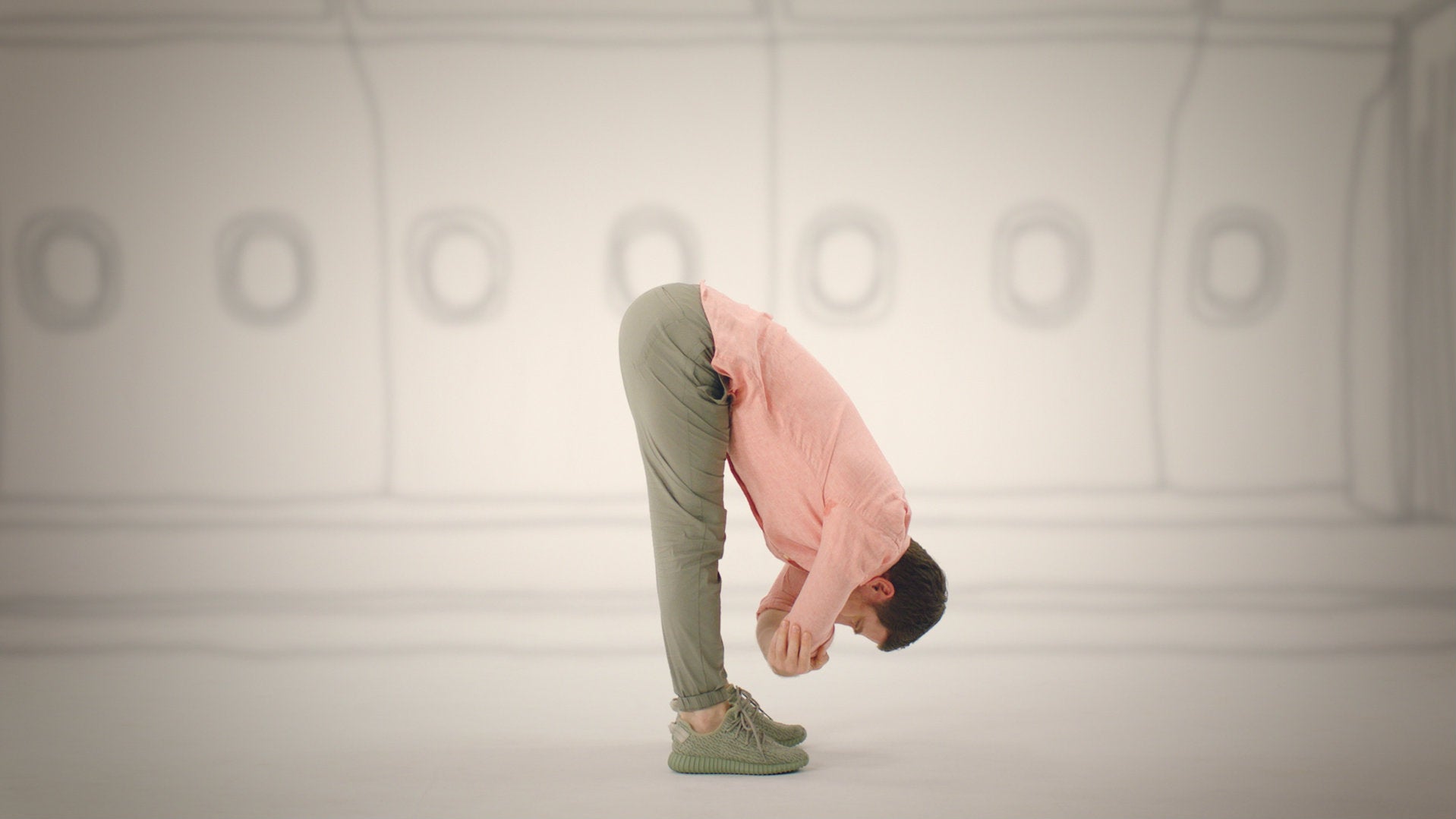In-flight yoga sounds ridiculous—but it’s actually a great idea
In case you missed it: the nebulous trend of wellness has descended upon the travel industry. Indeed, the new luxury is not mimosas and caviar upon check-in, but charcoal water and mindful movement.


In case you missed it: the nebulous trend of wellness has descended upon the travel industry. Indeed, the new luxury is not mimosas and caviar upon check-in, but charcoal water and mindful movement.
Within this new wellness universe, Hong Kong-based airline Cathay Pacific has launched an “in-flight well-being program” offering a series of yoga videos via its entertainment system. If you’re picturing a first-class passenger completing sun salutations in a private suite, it’s thankfully a little more inclusive than that. Several of the videos are focused on postures and techniques that can be done while in an economy class seat, as well as in your hotel after landing.
So why should a non-yogi—or someone turned off by ostentatious displays of wellness—care at all? Because whether you realize it or not, frequent flying takes a tremendous toll on our bodies. A paper published by the School of Hospitality and Tourism Management at the University of Surrey in the UK looked at the physical side effects of “hyper-mobility”—or the kind of frequent business travel that’s often glamorized in our culture. It lists a litany of downsides that result from excessive airtime such as disruption of circadian rhythms, the risk of blood clots from deep vein thrombosis, anxiety, and immune system impairment.
If the prospect of yoga mid-flight sounds too obnoxious to bear, think of it instead as movement. Your body will thank you either way for implementing the tactics below.
Increase your circulation: One in ten travelers develop symptomless deep vein thrombosis during long-haul flights, which puts them at risk for a fatal blood clot. In addition to getting up frequently, there are several exercises you can do while seated to ensure that your circulation keeps pumping. Try toe and heel raises, where you alternate flexing the toes off the floor with lifting the heels, as well as circling the ankle in both directions with the foot lifted off the floor. Try and do five reps of each every hour or so.
Counteract sitting: It’s important to get up and walk around as often as possible during a flight, but pro-actively counteracting the physical side effects of prolonged sitting is important, too. Add uttanasana, or a forward fold, which helps lengthen the hamstrings that get shortened by prolonged sitting. Then try malasana, or a deep squat, which opens the hips and groin and feels great after being locked into the 90 degree angle of your airplane seat. If you don’t want to put on a show, head back to the galley during a lull in flight service and do a couple stretches by the exit doors in between walking “laps” on the plane.
Don’t neglect your upper body: Since the legs often feel the most fatigued by long-term sitting and cruising altitude, it can be easy to neglect the upper body. Try a seated twist: Lengthen your spine, grab the right armrest with the left arm, and place the opposite arm behind you while turning your neck to face your head rest. Hold for 10-20 seconds (while your seat-mate is in the lavatory, perhaps) and then repeat on the other side.
For nervous flyers: Observing the breath is a powerful antidote to anxiety in any setting. While meditating on a plane might be too much to ask, simply favoring your exhale can help calm your nervous system. Inhale for five counts, and then exhale for seven. Repeat for ten breaths (or until the plane hits the runway).